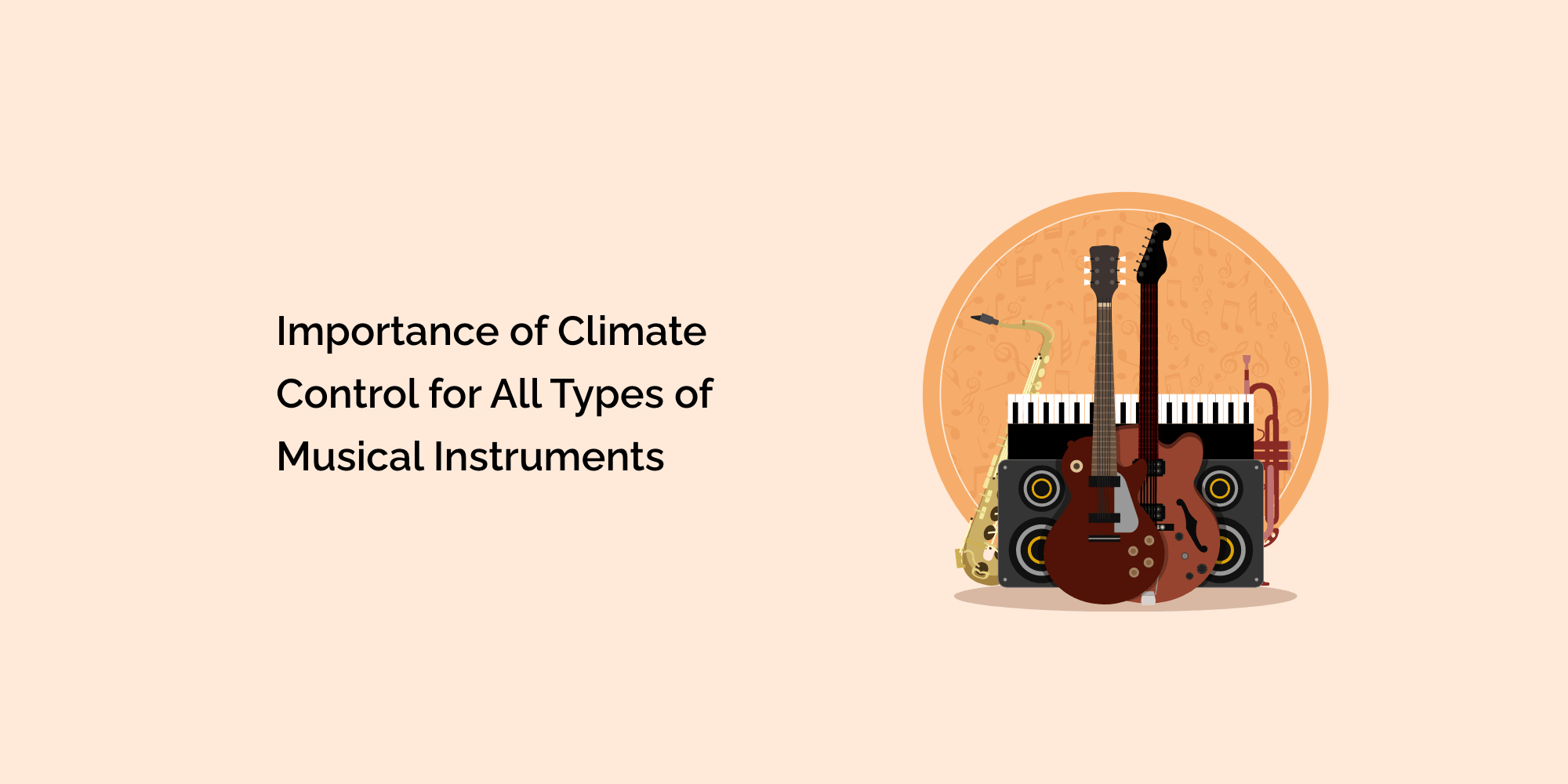In the world of music, instruments are the vessels through which artists channel their creativity, emotions, and stories. Yet, beneath the melodies lies a delicate relationship between musical instruments and their environment. The significance of climate control cannot be understated. From string to wind instruments, pianos to drums, maintaining optimal climate conditions is a harmonious symphony that ensures instruments remain in tune, produce high-quality sound, and stand the test of time. This blog explores the paramount importance of climate control for all types of musical instruments, showcasing how it preserves craftsmanship, sound quality, and musical heritage.
Crafting the Perfect Environment: The Core of Instrument Preservation:
Climate control is a foundational aspect of instrument preservation:
-
Structural Integrity: Fluctuations in temperature and humidity can lead to cracks, warping, and other structural damage.
-
Sound Quality: Instruments that are in optimal condition produce the best possible sound.
- Historical Value: Climate control preserves the authenticity and value of antique and historical instruments.
The Universality of Temperature Control:
Temperature plays a universal role across instrument types:
-
String Instruments: Proper temperature prevents strings from becoming brittle or overly elastic.
-
Woodwind and Brass Instruments: Consistent temperature levels ensure that materials expand and contract uniformly.
- Percussion Instruments: Maintaining temperature stability prevents warping of drumheads and other components.
The Intricacies of Humidity Control:
Humidity control is particularly vital for wood-based instruments:
-
String Instruments: Wood components are sensitive to humidity changes, affecting resonance and sound projection.
-
Pianos: Wooden soundboards and mechanisms are prone to swelling or shrinking in humid or dry conditions.
- Wind Instruments: Woodwind instruments can crack or warp due to humidity imbalances.
Tailoring Solutions for Various Instruments:
Different instruments require specialized care:
-
String Instruments: Humidity control prevents string tension fluctuations, preserving sound quality.
-
Wind Instruments: Stable humidity levels prevent warping and material deterioration.
- Percussion Instruments: Climate control helps maintain structural integrity and prevents wear.
Preventing Hidden Damage: The Role of Monitoring:
Climate monitoring prevents invisible harm:
-
Real-Time Alerts: Monitoring systems offer immediate alerts when temperature or humidity levels deviate.
-
Preventive Action: Musicians can take action before any irreversible damage occurs.
- Historical Insights: Data analysis helps anticipate trends and implement preemptive measures.
Musical Legacy and Heritage:
Climate control is instrumental in preserving cultural heritage:
-
Antique Instruments: Proper conditions ensure that valuable antique instruments remain playable.
-
Historical Significance: Instruments that have witnessed history are preserved for generations to come.
- Craftsmanship: Maintaining the integrity of craftsmanship ensures future generations can appreciate masterpieces.
Musicians as Guardians: Nurturing Instruments through Climate Control:
Musicians play a central role in climate control:
-
Education: Musicians must understand the impact of climate on their instruments.
-
Responsiveness: Timely action based on monitoring alerts is crucial.
- Collaboration: Musicians' involvement is key to ensuring proper instrument care.
Future-Proofing: Ensuring Instruments' Longevity:
Climate control contributes to instrument longevity:
-
Financial Investment: Preserving instruments protects musicians' investments.
-
Emotional Investment: Instruments become part of musicians' identities; preserving them preserves memories.
- Musical Continuity: Instruments that are well-maintained continue to contribute to music's evolution.
Conclusion:
The music that resonates from instruments is an ethereal bond between art and science, craftsmanship and environment. Climate control is the invisible conductor that orchestrates this union, allowing musicians to create and audiences to revel in the magic. From preserving the authenticity of historical instruments to enhancing the sound quality of contemporary ones, climate control is the guardian that ensures musical instruments remain timeless messengers of melodies, connecting hearts and souls across generations.








